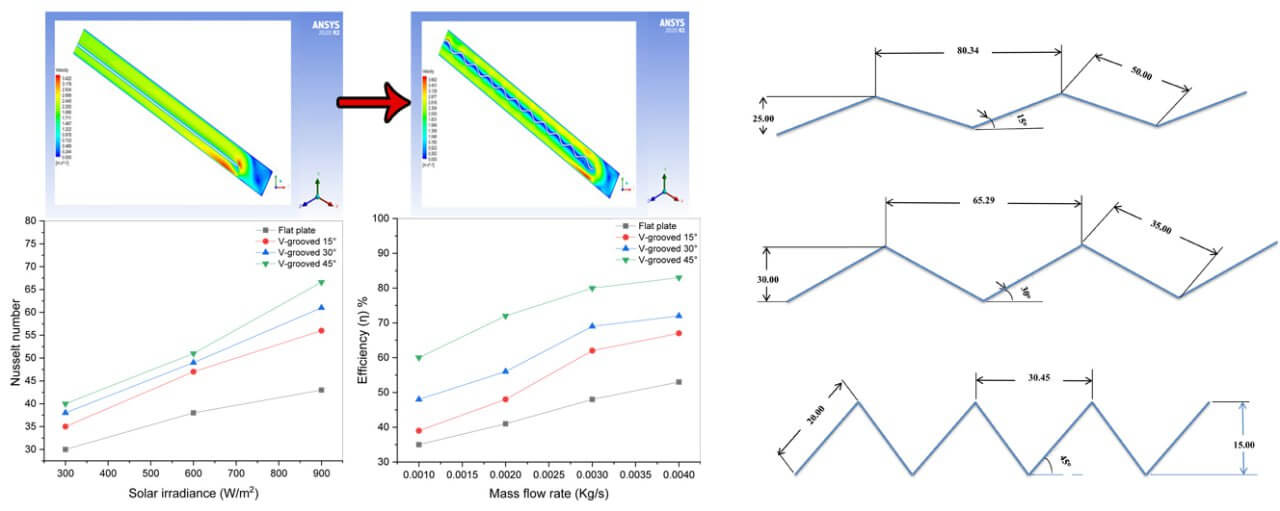 Open Access
Open Access
ARTICLE
Numerical Investigation Thermal Performance of Solar Air Heater Using Different Angle V-Grooved of Corrugated Absorber Plate
Engineering Technical College of Mosul, Northern Technical University, Mosul, 41001, Iraq
* Corresponding Author: Ayad S. Abedalh. Email:
Frontiers in Heat and Mass Transfer 2023, 21, 227-243. https://doi.org/10.32604/fhmt.2023.041777
Received 05 May 2023; Accepted 08 June 2023; Issue published 30 November 2023
Abstract
Solar energy, a renewable resource, can be harnessed instead of fossil fuels to generate power and heat. One effective method for converting solar energy into heat is through a solar air heating (SAH) system. The theoretical investigation focused on the thermal performance of various V-groove angles on a corrugated absorber plate. The researchers maintained the exterior dimensions and constraints of the absorber plate while increasing its surface area by using a corrugated absorber surface. For the simulation, three different V-groove angles were employed: 45°, 30°, and 15°. The temperature and air flow rate into the system had been set at 30°C and 0.15 m/s, respectively four various solar radiation intensities have been examined for each of the variables. The governing equations associated with the standard design, including the turbulent kinetic energy (k) and dissipation rates model (ε), were solved using the ANSYS 2020 R2 program. The results indicated that Utilizing corrugated absorber plates resulted in a rise in the Nusselt number., surpassing the performance of flat plate absorbers. Among the different configurations, the V-grooved 45° plate demonstrated the best results under the same conditions. Furthermore, it was observed that the efficiency values improved with increasing solar irradiance. The investigation also showed that the employing of V-grooved 45°, V-grooved 30°, and V-grooved 15° absorbers led to efficiency improvements of about 20.8%, 26.3%, and 36.14%, respectively, when compared to a flat plate at a solar irradiation of 900 W/m2.Graphic Abstract

Keywords
Cite This Article
 Copyright © 2023 The Author(s). Published by Tech Science Press.
Copyright © 2023 The Author(s). Published by Tech Science Press.This work is licensed under a Creative Commons Attribution 4.0 International License , which permits unrestricted use, distribution, and reproduction in any medium, provided the original work is properly cited.


 Submit a Paper
Submit a Paper Propose a Special lssue
Propose a Special lssue View Full Text
View Full Text Download PDF
Download PDF Downloads
Downloads
 Citation Tools
Citation Tools
